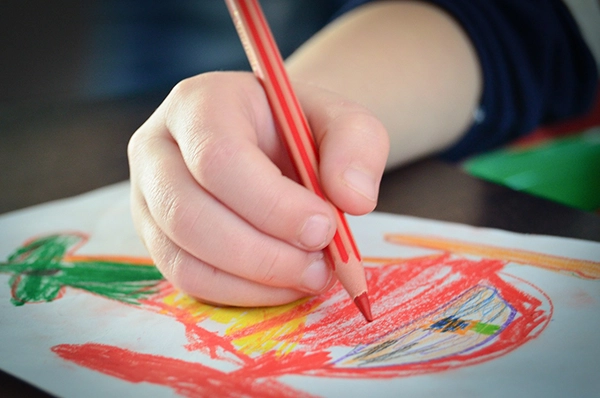What is Drawing and Talking Therapy?

Drawing and Talking therapy centres around a 12-week cycle of sessions, where children are encouraged to use drawing as a medium to express their emotions. This method allows individuals to communicate in ways that differ significantly from traditional verbal language. By engaging in this non-intrusive practice, participants can explore their feelings and thoughts through a creative process that does not direct them towards specific outcomes or solutions.
How Does It Work?
The core of Drawing and Talking therapy lies in its simplicity and the safe environment it fosters. Each session provides a space where children can freely draw, letting their subconscious lead the way.
This process helps them tap into deep-seated emotions and conflicts, facilitating a gentle exploration of their inner worlds. As therapists we act as a supportive presence, guiding the individual through their journey without interpretation or judgement, allowing the child to find their path to emotional clarity and resolution.
Benefits of Drawing and Talking Therapy
Child Centred Healing
This therapeutic approach is distinct from other more common solution-focused and cognitive-based therapies. Its uniqueness lies in its non-directive technique, which places the child at the centre of their healing process. Drawing and Talking is particularly beneficial for children who find traditional counselling methods challenging or are less able to express their feelings verbally. It provides a visual and tangible form of expression that can be particularly revealing and healing.
Accessibility
Drawing and Talking is an accessible, effective, and respectful way to address a range of emotional and psychological issues. It invites children to open up new channels of communication with themselves, often leading to profound insights and lasting change. Whether as part of a broader therapeutic strategy or as a stand-alone intervention, Drawing and Talking Therapy offers a unique pathway to mental and emotional well-being for children and young people.
We also offer Drawing and Talking Therapy via Zoom. Allowing the therapist to provide immediate feedback and support as if they were in the same room. This setup helps maintain the continuity and effectiveness of the therapy, making it a practical alternative to face-to-face sessions.
Frequently Asked Questions About Drawing & Talking Therapy
Find answers to commonly asked questions about our drawing and talking services.
Still have a question?
If you have any more questions or need further information, please do not hesitate to contact us. We are here to support you and provide any additional details you might need to start your journey with Drawing and Talking Therapy.